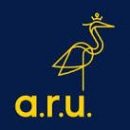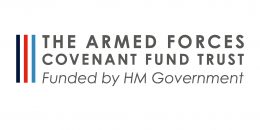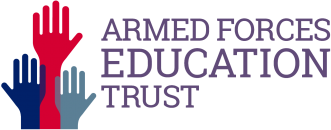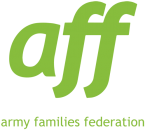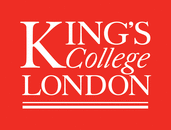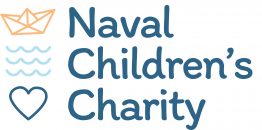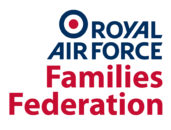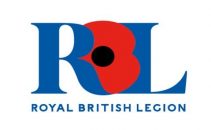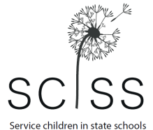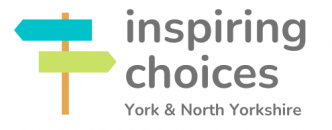An interview with Dr Claire Lee: Not "just another school day": An art-based dialogic inquiry into the learning lives of children from armed forces families in a UK primary school'
Posted in Views by Katherine Lawrence
I spoke to Dr Claire Lee, Oxford Brookes University, about her ESRC-funded PhD entitled: 'Not "just another school day": An art-based dialogic inquiry into the learning lives of children from armed forces families in a UK primary school'.
Claire’s PhD, at the University of Bristol, contributes to the SCiP Alliance community’s understanding of the context for Service children in primary school and is valuable in hearing directly from Service children themselves through art and poetry.
“Please learn from our research. Service children are not heard and you don’t know how we feel. If our work was made public it would mean we were heard.” (Jessie, age 11)
What led you to undertaking this research?
As a primary school teacher and having had a Service childhood myself, I found I connected with the significant proportion of Service children in my school. In everyday interactions I realised that as a school we didn’t always have a clear understanding of the effect having a parent in the Forces may have on wellbeing and education. When I had the opportunity to study at university in 2014, I began by looking for the body of research on how schools could better support Service children and found a marked lack of attention to this. My University of Bristol Masters project, “Under the radar”, was an arts-based study with primary school children looking at how they wanted to be cared for and supported in school. The way the children responded convinced me that it is important for Service children to be heard and understood. It demonstrated that arts-based research can be a powerful and ethical way to generate understanding of children’s lives and I developed the approach further in my ESRC-funded research PhD.
What did you do? How did you approach the research?
The research involved a participatory project in which I worked with a group of seven children one afternoon a week for 14 months. We explored the question “what it’s like to be a Service child in the school?” and created a space together to discuss anything that puzzled, intrigued or worried them and to express it through the arts. This gave me a deep understanding of how children make sense of the world they live in and how these children wanted to be understood and cared for.
It was important that the children steered what we explored and had control on how we used the space. I spent a lot of time thinking about how to create a space where the children could feel comfortable and respected and where we could trust one another. I used an arts-based approach having seen as a teacher how children can articulate complex ideas through art that they can’t necessarily through language alone. I found that the medium of non-representational art allowed children to explore and express hopes and experiences, making meaning together.
The afternoons were driven by the children’s concerns. For example, they might bring in an object to talk about or announce some news at home, or mention something they’d become aware of in the media. Then they would choose to explore it through activities such as dance, filming, photography, stop-motion animation, art and craft. Often they would want to explain why they’d made their creation and what it meant to them. Topics ranged from Donald Trump to Peppa Pig, from mortgages to play spaces to parental deployment. My report incorporates hours of transcripts, field notes and visual materials.
What did you particularly notice about this group of children’s response?
I noticed they were particularly alert to certain things, such as news reports which might have implications for the UK militarily and therefore for their parents. Their approach and selection of topics were always tinged with their experiences as members of the Armed Forces community.
The research allowed these children an experimental space where they tried out new ways of relating and being. Bringing together a small group with shared experiences allowed me to see how they presented their identities and wanted others to relate to them. Children who might not have chosen to be friends now trusted and supported each other and genuinely listened to one another. Throwing children together in group-work isn’t always successful but in this case the conditions and environment made it work.
How did your approach give your study a unique perspective?
Being alongside the children for so long was a real privilege as it allowed me to understand how they make sense of both small and massive events such as moving or deployments. All the children experienced parental deployments of different lengths and frequencies which they talked about more than anything else. And a number of them moved house and schools during or immediately after the research – one actually moved house twice during the research, once within the UK and once overseas. Some were preparing in advance for moves, while others moved at short notice. Others were fairly new to the school and were still finding their feet, and I was alongside the children as all this happened.
The format allowed us to explore what mattered to the children and consider how they wanted to be understood. Using art allowed them to develop their thinking over time rather than answering one-off questions, so ethically it felt like a better approach than asking children direct questions. Being child-led reduced the risk of research suggesting topics of concern or leading children’s thoughts. They led what they wanted to share.
So much in schools is based on individual achievement and this provided an opportunity for collective meaning-making and understanding.
And, having been a teacher and a Service child myself, I brought a unique perspective to the analysis of the research.
There’s clearly a wealth of important information in your report, but what would you say are your key findings and recommendations?
People often want to know ‘what works’. It’s important to recognise that every child is different and their circumstances and responses are changing all the time.
So schools need to adopt sophisticated approaches to children’s voice. Children are good at saying what they think you want to hear. It’s really important to pay attention to setting up the conditions for listening to children in ethically sound, pupil-focussed ways.
I would urge practitioners to exercise caution when using terms such as ‘resilience’ and ‘neediness’ which can be simplifications that can mask immense complexities. Resilience, for example, may mask pain and leave a child without support, whereas the child deemed ‘needy’ might just be organising the support they need.
Look beyond the norms and shift the emphasis from fixing the child to looking at how to improve their environment.
My research shows how sophisticated children’s thinking can be and how deeply they engage with learning when their curiosity steers the learning. I would urge schools to find spaces where children’s priorities take the lead, and to provide spaces for identity work.
How would you like to see the community respond?
It is vital to recognise the need for funding for qualitative research, constantly renewing the evidence base around UK Service children’s experiences in education. It’s also important that funding is available to ensure that research is appropriately disseminated. This means not just within the research community but in ways that open up dialogue with young people and between young people and their peers and teachers through novel media such as turning findings into art, into graphic novels, or into animations.
Those commissioning research need to keep an open mind and be prepared to hear what they may not want to hear.
Keep Service children in the spotlight; not just because of school league tables or the support families provide for the UK military, but also in their own right.
Shift the emphasis from fixing the child, onto how policies and practices might be rethought with families in mind.
This interview barely scratches the surface; Claire would be very happy to be contacted:
clairelee@brookes.ac.uk
